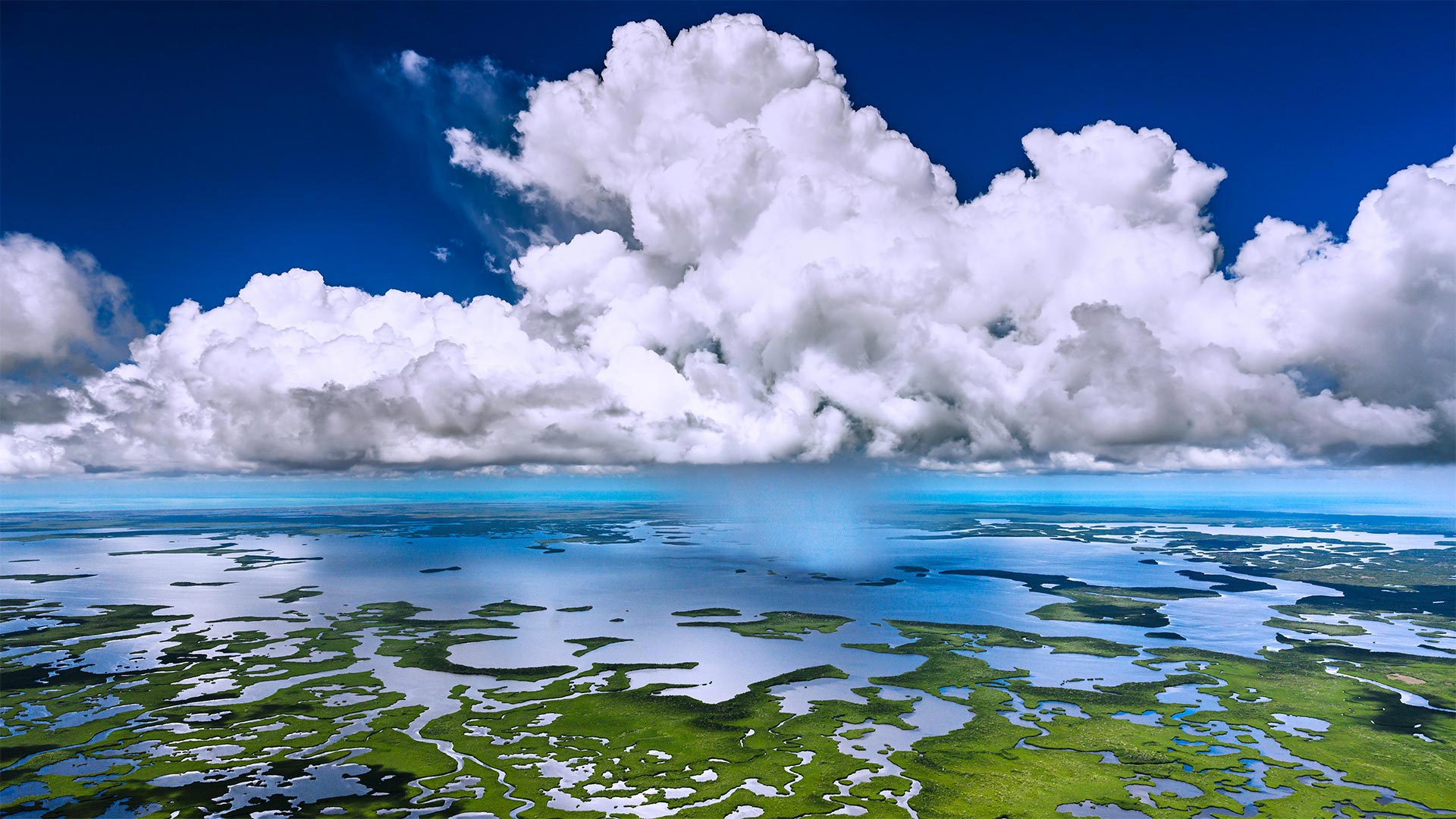大沼泽地国家公园鸟瞰图 Aerial view of Everglades National Park, Florida (© Tetra Images/Getty Images)

大沼泽地国家公园鸟瞰图 Aerial view of Everglades National Park, Florida (© Tetra Images/Getty Images)
Clouds over the 'River of Grass'
It's the beginning of the wet season in the Everglades, where it's typically hot and humid from May through November. Afternoon thunderstorms are common, bringing heavy rainfalls that subside quickly. The largest subtropical wilderness in the US, the Florida Everglades is essentially a slow-moving river, 60 miles wide and over 100 miles long. The water flows during the wet season from Lake Okeechobee southward across a limestone shelf to the southern tip of the Florida Peninsula. The complex ecosystem here is not found anywhere else on the planet.
Nicknamed the 'River of Grass' by conservationist Marjory Stoneman Douglas, the Everglades are full of sawgrass marshes, cypress swamps, and mangrove forests. In the early 20th century, water flow from Lake Okeechobee was increasingly diverted to support the development of South Florida, and it became clear that the Everglades were quickly vanishing. To help protect the fragile ecosystem, Everglades National Park was established in 1934, preserving about 20 percent of the original wetlands. While rising water levels can make it challenging to spot wildlife during the wet season, it's a critical season for the birds, crocodiles, manatees, and many more beautiful creatures that call the 'River of Grass' home.
评论已关闭